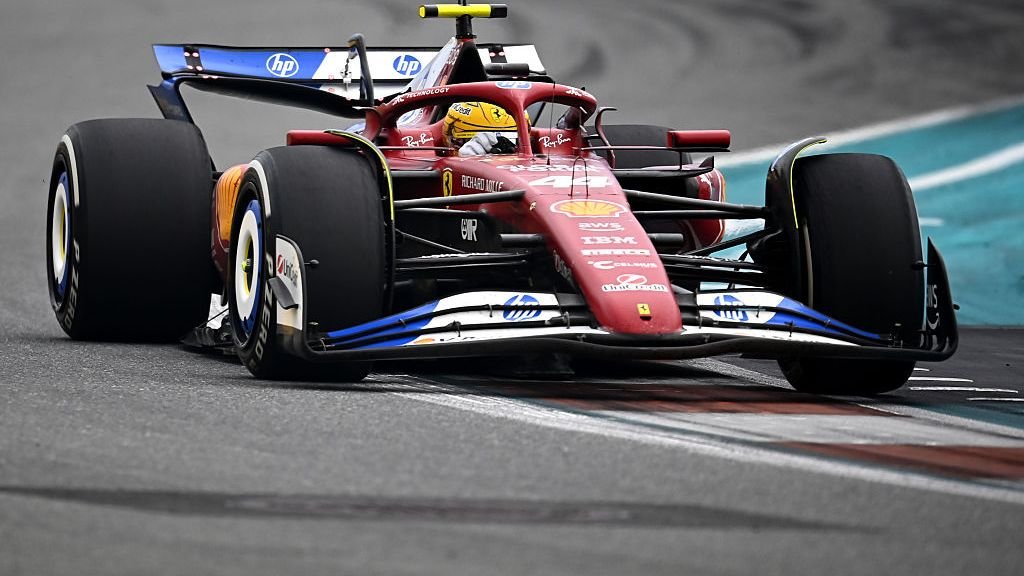Miami Grand Prix: Highlights and Key Moments of the Race Weekend
The Miami Grand Prix unfolded as an exhilarating event, filled with captivating moments and discussions that fans and analysts alike are eager to dissect. One of the most talked-about aspects of the race was the radio communication between Lewis Hamilton and his team, which became a focal point during the latter stages of the competition. Although Hamilton did not finish on the podium, his on-track dialogues and the surrounding team dynamics drew significant attention.
During the race, Hamilton found himself in a tense situation, urging Ferrari to swap positions between him and Charles Leclerc. This request stemmed from Leclerc’s advantage of being on hard tires while Hamilton was on the medium compound. As Ferrari strategized their approach, managing both drivers—especially with Carlos Sainz close behind and Kimi Antonelli ahead—Hamilton expressed his frustration. Initially instructed to maintain his position, he reacted with sarcasm when informed that the team was considering a swap, quipping, “Yeah, have a tea break while you’re at it! Come on…”
Hamilton later lightened the mood with a humorous suggestion about letting Sainz pass as well, which underscored his growing impatience with Ferrari’s decision-making process. Reflecting on his radio messages, Hamilton clarified, “It wasn’t even anger… It’s like, ‘Make a decision!’” He emphasized that his comments were not meant to be disrespectful but rather a plea for quick action during a high-pressure situation. “I’m not going to apologize for being a fighter,” he asserted. “I still want to win, and I believe we can return to the front once we resolve our car issues.”
Despite the challenges, Hamilton felt a sense of positivity after the race, indicating a notable improvement in his performance compared to previous outings. He expressed appreciation for the race itself, stating, “I genuinely enjoyed the race.” His position, though not ideal, showcased a better alignment with his teammate’s pace, especially when compared to his struggles in Saudi Arabia just two weeks earlier.
The exchanges between Hamilton and Ferrari’s drivers highlighted a broader challenge for the team, which has faced criticism regarding its race strategies. Team orders became a necessity as both Leclerc and Sainz were competing for similar track positions. While Hamilton benefited from the timing of a virtual safety car, he showcased comparable speed to his teammate, which was a significant change from his earlier experiences this season.
"I felt the car really come alive," Hamilton remarked about his performance. He noted that while overtaking was challenging, he was optimistic about advancing his position during the race. However, he felt that the decision-making process from Ferrari could have been quicker to capitalize on the moments when he was clearly faster.
The contrasting reactions from Hamilton and Ferrari’s team principal, Fred Vasseur, were striking. Vasseur expressed concern about the potential fallout from the drivers’ frustrations, while Hamilton aimed to reassure him, saying, “Dude, calm down. Don’t be so sensitive.” He acknowledged the immense pressure faced by drivers during the race, which often leads to heightened emotions and candid communications over the team radio.
Ferrari’s performance in the race sparked further discussions regarding their competitiveness in the current season. The team finished behind both Mercedes drivers and Alex Albon’s Williams, alongside a daunting gap to McLaren, which was nearly a minute ahead. Vasseur recognized the significance of addressing these discrepancies, stating, “We can’t allow ourselves to be lost amid the chatter around team radio messages.”
The team principal articulated the complexities of making strategic decisions during a race and the challenges in assessing driver speeds and potential overtaking opportunities. “It’s always much easier to make a decision two hours later,” he noted, emphasizing the difficulty of real-time choices made on the pit wall.
As Ferrari looks to improve, the focus will inevitably shift to addressing the performance gap that has opened up with McLaren. Vasseur’s acknowledgment of the challenges ahead is a reminder of the competitive nature of Formula 1, where every second counts, and the need for consistent improvement is paramount.
Looking ahead, the next race in Imola will be particularly significant for Ferrari, as it represents an opportunity to reclaim some of their competitive edge. The team is aware that the pressure will be on to not only enhance performance but also to refine their communication and decision-making processes during the race.
In summary, the Miami Grand Prix was a weekend filled with drama, competitive spirit, and a glimpse into the intense dynamics of Formula 1 racing. The interplay between Hamilton, Ferrari’s team strategies, and the performance of other teams highlighted the complexities that come with racing at this elite level. As the season progresses, teams will undoubtedly continue to analyze every element of their performance in pursuit of excellence on the track.
